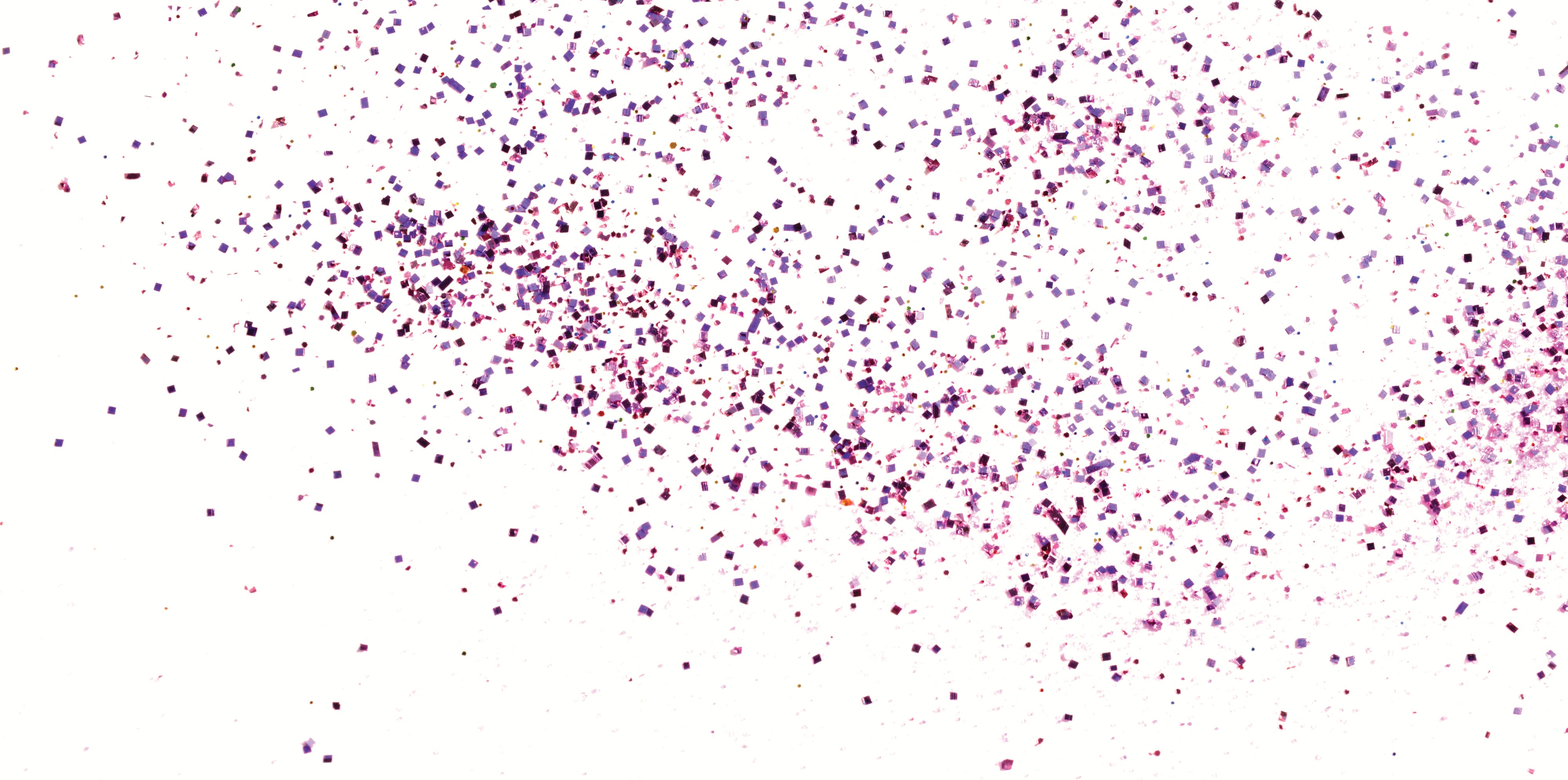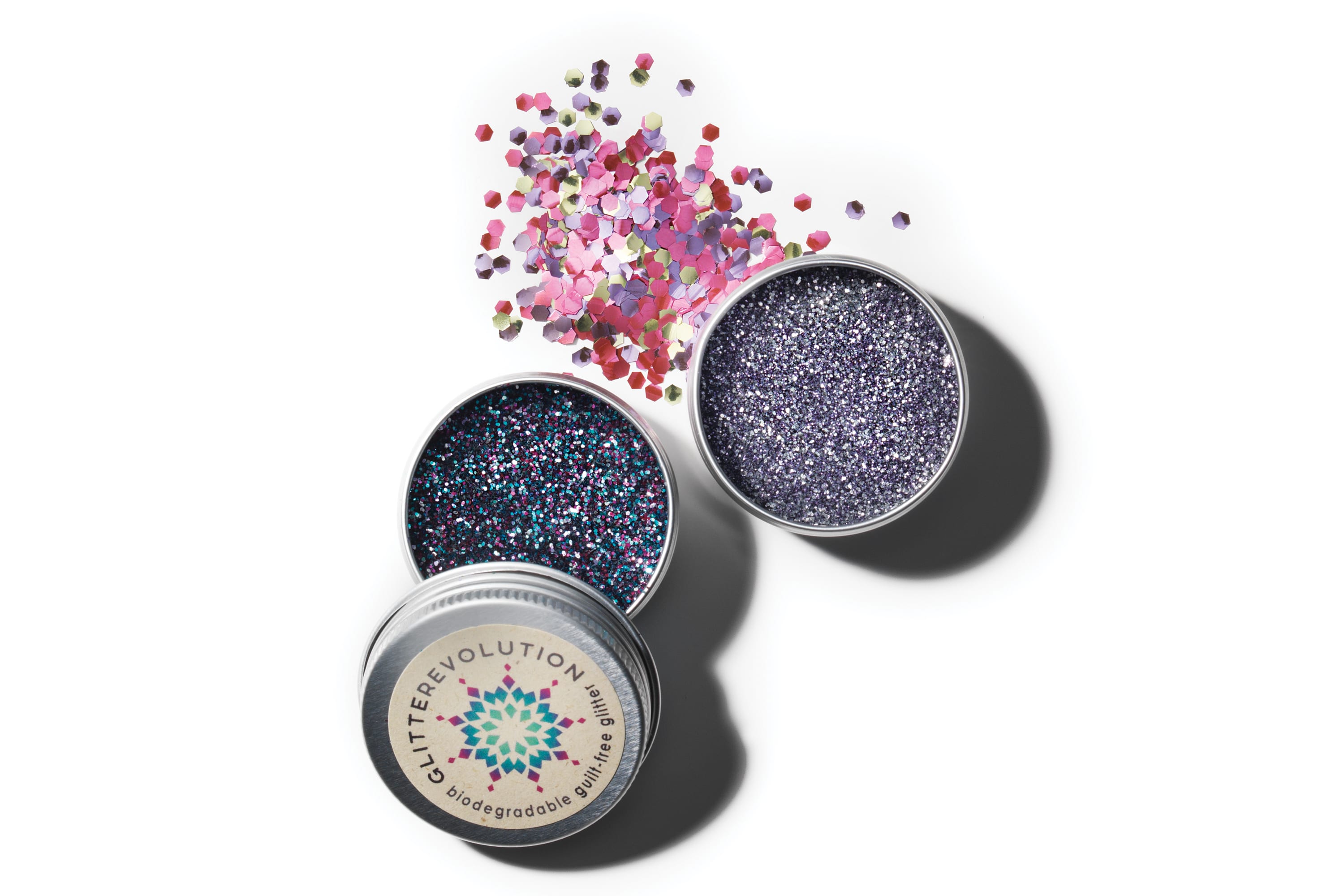The Problem With Glitter Migrating From Our Beauty Products Into Our Oceans
“How to clean up glitter: (1) Burn down your house. (2) Move. (3) The glitter followed you. There is no escape,” tweeted James Breakwell, a comedy writer and father of four. The hilariously accurate sentiment was likely felt by the backstage cleanup crews at Fall 2018 shows, such as Preen by Thornton Bregazzi, where makeup artist Val Garland applied the tenacious craft staple along models’ hairlines, foreheads and cheeks. Likewise at Giambattista Valli, where she once again enlisted the shimmery dust to create glitter masks—some models looked like their faces had been planted in the stuff.
Garland wasn’t the only one to play with sparkle this season. It also showed up at Maison Margiela and Oscar de la Renta, pieces of it probably still lingering, like microscopic graffiti, long after the teardown.
But glitter’s persistence isn’t just a nuisance; it’s a concern for the eco-conscious among us, right up there with plastic straws and water bottles. “Glitter may seem harmless, but these tiny bits of plastic are actually an environmental hazard, particularly in lakes, oceans and other waterways,” says Sarah Jamal, a spokesperson for Environmental Defence. Like its sister the microbead—an exfoliator found in everything from body wash to facial scrub that is now banned in beauty products in Canada—glitter is a microplastic, which means it’s a plastic fragment smaller than five millimetres that accumulates in the environment, explains Jamal. “These pollutants have been found in the farthest corners and deepest trenches of the planet, harming wildlife like plankton, fish and birds that mistake them for food.”
Earlier this year, the United Nations Environment Programme launched its first-ever global plastics report on World Environment Day to highlight the urgency of the plastic-pollution problem, says Jamal. It’s an issue coming to light during a time when we’ve reached peak glitter, thanks to what feels like a North American mission to spread sparkle everywhere, from greeting cards to drinks such as Starbucks’s Unicorn Frappuccino. Yes, we’re even drinking it.

In the beauty world, cosmetic use of glittery objects dates back to ancient civilization, when Sumerians would wear crushed gems on their lips. Glitter started showing up in cosmetics in the ’60s, says beauty historian Rachel Weingarten. “If you look at the fashions of the time, they were heavily embellished with sequins of all sizes,” she says. “Makeup followed suit but in moderation—it wasn’t glitter the way we know it today, although companies were experimenting with adding shimmer to the extremely bold pigments that were popular then.” Companies like Revlon, Estée Lauder and Elizabeth Arden were inspired by French fashion designer Pierre Cardin’s glittery sheath dresses and tried to create cosmetic versions by adding shimmer to lipsticks, eyeshadows and face powders.
These days, glitter is in everything from nail polish to hairspray; more recently, it has crossed party lines and entered the world of skincare in products such as face masks and sunscreen, an idea clearly conceived by marketing execs more interested in double taps than providing actual skincare benefits. Makeup with a glitter finish has seen strong double-digit growth over the past two years, says Amy Chung, a beauty industry analyst with NPD Group. This rise has been fuelled, in part, by “Instagram and other social media, which have really been on the forefront of driving trends in beauty,” she says. (See #glitterbrows, #glitterboobs and 2017’s alarming #glittertongue.)
While social media has boosted glitter’s popularity, it has also helped to spread the word about the environmental concerns surrounding its use. It has led to more than 60 music festivals in the United Kingdom banning traditional glitter, along with other single-use plastics, and galvanized brands to find ingredients that deliver a sustainable sparkle, such as synthetic fluorphlogopite (also known as synthetic mica), an eco-friendly material that Lush uses to add a glittery effect to products, like its bath bombs. There are also several new brands popping up, like Bioglitter, Glitterevolution and BioGlitz, that have invented responsible glitter using renewable plant-based materials like eucalyptus.
Even Meadowbrook Inventions has added a biodegradable offering to its menu. You may not have heard of the New Jersey-based company, but it’s where the story of modern glitter began. In the 1930s, Henry Ruschmann, a machinist, accidentally figured out a way to pulverize plastic to make large quantities of glitter, a discovery that led him to start his company, now one of the world’s major bulk glitter distributors (appropriately, the company’s slogan is “Our glitter covers the world”), supplying its shiny wares to the cosmetics industry among others, writes Lisa Eldridge in Face Paint: The Story of Makeup.
“Most people I encounter admit they don’t think of glitter as a toxic microplastic; they think of it as a magical dust that fairies create.”
Yet just as glitter can look different depending on how the light hits it, we need to start viewing it through a different, more pragmatic lens, as we would with any other product that has the potential to harm the environment. “Most people I encounter admit they don’t think of glitter as a toxic microplastic; they think of it as a magical dust that fairies create,” says Saba Gray, founder of BioGlitz, a line of glitter produced from a biodegradable film derived from trees that is certified compostable. “We think glitter is magic,” she says. “But it’s also important to acknowledge the truth: that glitter is a commodity and, like so many other commodities, it is currently produced from the cheapest possible materials without any foresight of how those materials affect the planet.”

The post The Problem With Glitter Migrating From Our Beauty Products Into Our Oceans appeared first on FASHION Magazine.